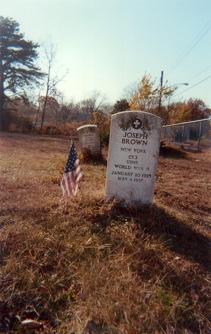Category: Uncategorized
Gary and Diana and Justin
 Dagnabit! (Is that how you spell dagnabit, you think?) I didn’t see that Justin was looking down!
Dagnabit! (Is that how you spell dagnabit, you think?) I didn’t see that Justin was looking down!
Oh well. Dagnabit. I’m watching my language in case Justin is reading this. HI JUSTIN!! He beat me at Operation. That’s a hard game. Was it always so hard??
My friends Gary and Diana (pictured) had me over for brunch today. Thank you!! They live in Hoboken. My new favorite city. LOVED Hoboken. It felt a little bit like the Village where I live, a little bit like Brooklyn, and New Orleans and also a little European at moments. It just had a good feel the minute I stepped out of the train station. Brooklyn is like that. The minute I get there I feel good.
Bizarrely, even though I spent a couple of years researching a murder there, I want to live on State Street in Brooklyn. Once again, I just loved the feel. Whenever I was there I felt good. Here’s what I wrote about State Street in my book:
“Every year, for the past ten years, the Brooklyn Botanic Garden has held a contest for the Greenest Block in Brooklyn. The block where Jean Sanseverino was murdered won first place in both 1998 and 1999, prompting the contest organizers to make the rule that no block can win two years in a row. ‘From a horticultural and aesthetic perspective, that block is one of the most beautiful blocks in New York, not just Brooklyn,’ says Ellen Kirby, from the Brooklyn Botanic Garden. One block west, purple and blue hydrangeas grow in front of suspect Bill Miller’s place. One block east, the building where suspect Joe Moore had a room is listed in the National Registry of Historic Places. To rent a studio apartment anywhere on this stretch of State Street would run you $1,000 a month now. But State Street was likely always lovely, even in the worst times. The neighborhood looks elegant in the crime scene photographs taken outside Jean’s building. A Native American reminiscing about State Street, which used to have a large Mohawk population, called it the most beautiful place in the world. There is something almost magical about the block where Jean once lived.”
Going to Princeton
 On Monday I’m going to Princeton to interview this guy:
On Monday I’m going to Princeton to interview this guy:
“Professor Jahn is Dean Emeritus of the School of Engineering and Applied Science. He is a Fellow of the American Physical Society and of the American Institute of Aeronautics and Astronautics, and has been chairman of the AIAA Electric Propulsion Technical Committee, associate editor of the AIAA Journal, and a member of the NASA Space Science and Technology Advisory Committee. He is vice President of the Society for Scientific Exploration and Chairman of the Board of the International Consciousness Research Laboratories consortium. He has been a long-term member of the Board of Directors of Hercules, Inc. and chairman of its Technology Committee, and a member and chairman of the Board of Trustees of Associated Universities, Inc. He has received the Curtis W. McGraw Research Award of the American Society of Engineering Education and an honorary Doctor of Science degree from Andrha University.”
So, yeah. Feeling a little intimidated. That said, he was great when I spoke to him on the phone, and exactly the person I’ve been looking for to talk to. He ran a Lab at Princeton called PEAR (Princeton Engineering Anomalies Research) Program. I was telling someone, maybe I posted here, that I actually found talking to him comforting. For someone like myself, who is outside the debate about what Jahn calls remote perception and mind/matter anomalies, the resistance to the results of the experiments more closely resembles religion than science. It’s irrational. I prefer my scientists to be more rational, thank you very much. They’re human of course, but still.
I just read a great couple of lines in a review of a book about the hard problem, which I don’t really feel completely comfortable with summarizing, it’s not my area, but it’s basically a question about consciousness, does it emerge from the brain, matter, or what? The reviewer, Jerry Fodor, wrote that the author “is right that the hard problem is really very hard; and I share his intuition that it isn’t going to get solved for free. Views that we cherish will be damaged in the process; the serious question is which ones and how badly.” For me, telepathy, and ESP and all of it are wrapped up in this same problem, and so the potential consequences will also be the same.
I started the Chris Carter book Parapsychology and the Skeptics and Elizabeth Mayer’s Extraordinary Knowing. I really wish I had these in the beginning. But then again, maybe it was better that I came at this absolutely and completely cold.
Halloween Parade 2007
 Of all days to forget I own a camera. This was from earlier in the day yesterday. There’s so much to take pictures of in this city and what do I do? I forgot to take pictures. I did manage this one shot of a small tableau or altar or something on the street. But I brought my camera to the parade and meant to shoot a movie from inside the parade looking out and TOTALLY forgot to pull out my camera at any point. What can I say? I’m an idiot. The parade was fun as usual, after the hours of waiting to actually march. And we were almost dead last.
Of all days to forget I own a camera. This was from earlier in the day yesterday. There’s so much to take pictures of in this city and what do I do? I forgot to take pictures. I did manage this one shot of a small tableau or altar or something on the street. But I brought my camera to the parade and meant to shoot a movie from inside the parade looking out and TOTALLY forgot to pull out my camera at any point. What can I say? I’m an idiot. The parade was fun as usual, after the hours of waiting to actually march. And we were almost dead last.
I bought myself a tiny pumpkin pie to have as a present after the parade. To reward myself for hours of fun?? I do not know my own logic. But I went to a diner after the parade with a friend and I wasn’t hungry when I got home.
So I have pie for today!! Today is pie day! Pie for everyone!
Mr. Hunter’s Grave
Here’s the story and the pictures I mentioned the other day. The pictures were taken with a disposable camera, and aren’t very good alas.
In 1956 the New Yorker published “Mr. Hunter’s Grave,” one of writer Joseph Mitchell’s best known articles. It told the story of George H. Hunter and the abandoned cemetery on Staten Island where he wanted to be buried.
Mitchell met Hunter on one of his trips exploring wildflowers in Sandy Ground, a largely abandoned town founded by free blacks before the civil war. Mitchell’s mother Virginia, a former slave, came there with her son after escaping to Ossining via the Underground Railroad. Hunter lived on Bloomingdale Road, across the street from the African Methodist Episcopal Zion church (he was on the board of trustees). Mitchell had written that he could walk the whole day on that road without seeing a single soul because the children and grandchildren of the original oysterman had long since moved away.
Hunter took Mitchell to the church cemetery where the widest variety of wildflowers could be found. Established in the early 1880’s on a dead end dirt lane called Crabtree Avenue, it hadn’t been tended for years. Gravestones covered with flowers with names like beggars lice and partridge pea were almost impossible to read. Some were marked with wooden crosses.
Then Hunter pointed out the grave of his first wife, Celia Ann Finney. To her left was the grave of his second wife Edith. George’s name was listed underneath Edith’s, along with the date of his birth, 1869. This was where George Hunter wanted to be buried, with his second wife Edith.
The piece ends with Hunter learning that Edith was not buried deep enough, and that chances were he would not be buried with her, but in an empty plot to her left.
I went to Staten Island in 2001 to look for the cemetery and to find out where Mr. Hunter was finally buried. I took the exact same Tottenville bus Mitchell would have taken to get there. At the time I wrote: the cemetery is well tended now. Vandalized in 1997, it has since been declared a New York City landmark and restored. Too restored. It’s bare and cold and missing a sense of renewal it might have had when it was lush, fragrant and overgrown. The wooden crosses are gone, as are most of the trees, shrubs, and wildflowers. But Mr. Hunter’s grave is unchanged. It’s exactly as Mitchell described it, except now there’s a gravestone for Hunter’s only child William, who died in 1955. He lies at the foot of his mother, Celia. Everyone thought William drank himself to death, I later learned, but when they got him to the hospital they discovered he had cancer.
There was no date of death for Mr. Hunter on any of the graves so there was no way of knowing which grave he was in. I went looking for his church and met Lois Mosley, a former tenant of Mr. Hunter’s who had just turned 75 the day before, and she was able to tell me that Hunter had died on April 6th, 1967, at 97, having never left Sandy Ground.
Sadly, he wasn’t buried with Edith as he had wanted to be, and he wasn’t buried next to her, as he thought he would be. He was buried in his first wife’s Celia’s grave. I hoped he was okay with that.
Crabtree Avenue is paved now. Along the former empty lane were the then new “Sandy Ground Estates.” At the time of my visit, all the houses were $315,000 except the one directly across from the graveyard which was $310,000. The realtor who was there that day had never heard of Joseph Mitchell or George H. Hunter. She didn’t know that to some people, this was the prime location.
I’ll bet those houses are a lot more now. Or maybe not. Unlike every other inch of real estate around Manhattan, I don’t get much of a buzz about Staten Island. I thought it was beautiful there though. I wouldn’t mind living there at all.
The Sandy Ground Cemetery.
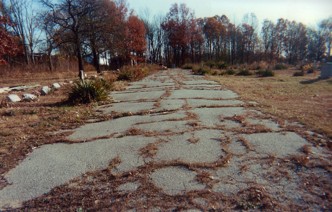
The three Hunter family graves.
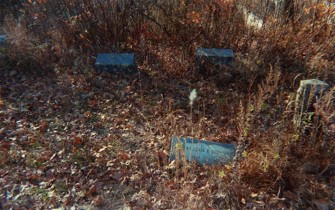
Where Mr. Hunter wanted to be buried.
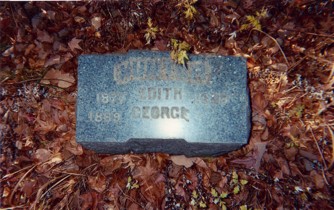
Where he was actually buried.

This is a picture of Mr. Hunter’s house. I have another picture of much sadder looking house, except I can’t remember why I took that picture. I have a vague recollection that it was once Mr. Hunter’s house and this was the house he lived in at his death.
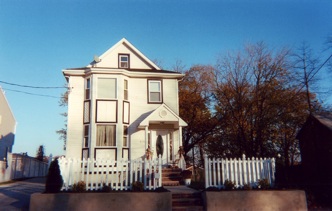
Another grave at Sandy Ground, a WWII veteran.
(Joseph Brown, died on May 4, 1957. He was 32.)
